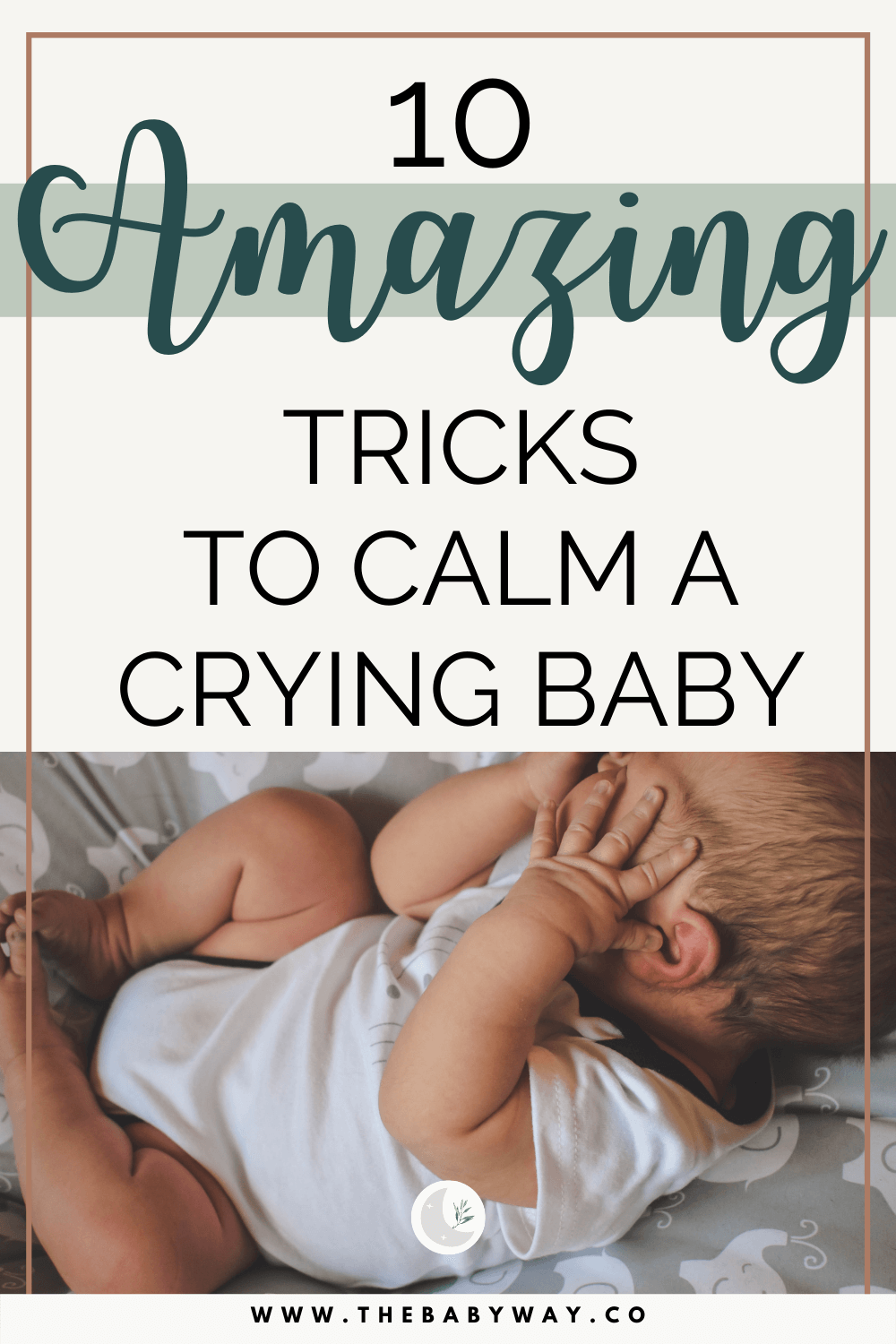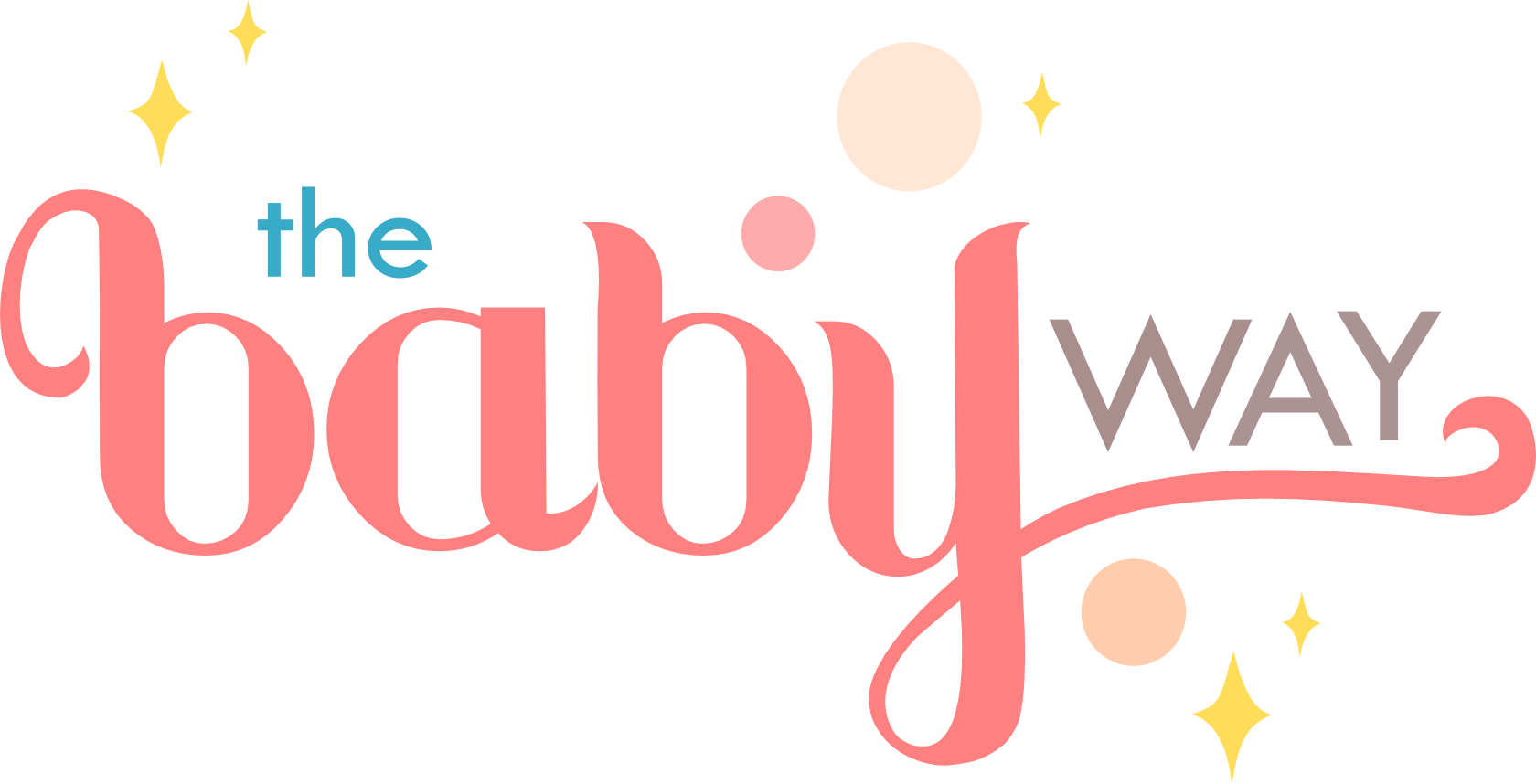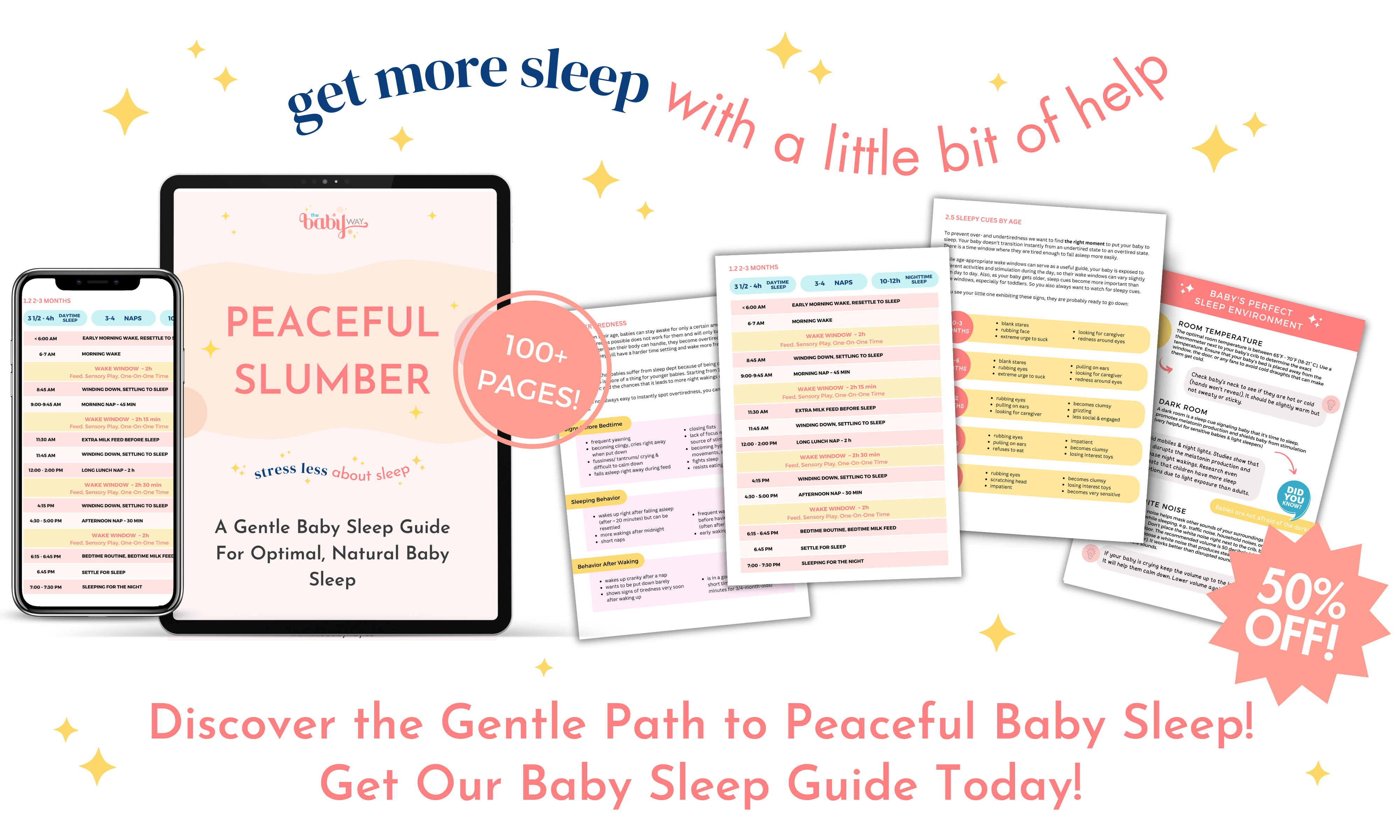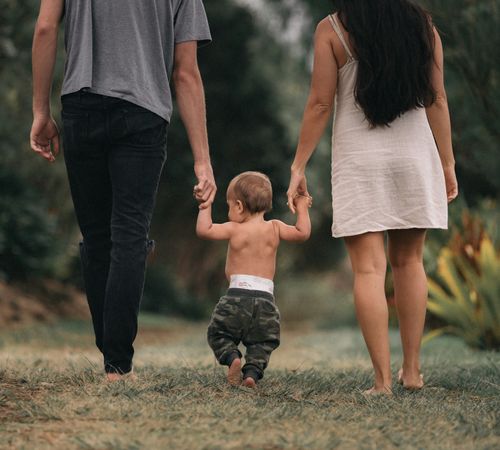All babies cry. But it can be really hard for a parent to hear their little one sob. So here we collected 10 cool tricks you probably have not heard of to help a crying baby calm down.
Hearing a baby cry inconsolably is tough. Not only because you feel so sorry for your little bug, but also because it is really stressful for a parent to hear. Especially when you cannot figure out why they are crying and what is bothering them.
The first thing we have to understand is that crying is the only way of communication for babies for a very long time. They cannot talk, they cannot point. So they have to use their loud voice to signal their needs.
The second thing we have to understand is that crying is ok! For decades we have been raised with the belief or the feeling that crying is something bad. "Stop crying!". A phrase that almost instinctively pops out of our mouth if we hear a child crying. And even though we are not focusing on emotionally unstable toddlers in this article, your little baby's emotional distress also deserves to be acknowledged, doesn't matter if they are a newborn, infant, or a toddler.
If your baby is experiencing prolonged crying or excessive crying and you fear that an undetected health issue is the underlying cause, never hesitate to contact your pediatrician.
Why babies cry
Some babies cry more, some babies cry less. Besides signaling the natural urges of our little ones like feeding, sleeping, or closeness, crying is also linked to your child's temperament. Highly sensitive children, for example, might get more easily overwhelmed by sounds, sights, or activities. Over time you will learn your baby's temperament and the things that might stress them out.
Infant crying is also more extensive in the first few months of life. All babies go through the phase of purple crying, also known as the witching hour. Thereby, your baby will get fussier or starts crying during the evening hours. Purple crying usually begins at about 2-3 weeks, has its peak at 6-8 weeks, and then slowly decreases until 3-4 months. And while all babies experience purple crying to some extent, some only become fussy while others will cry for several hours in a row. And very few even don't mind at all.
Did you know that during the first three months, your baby is crying more than at any other time?
However, don't confuse the witching hour with colic. If your baby is suffering from colic, they will be crying during the whole day and not only at specific times (e.g., the evening or before sleeping). If you really assume infant colic, I recommend talking to your pediatrician about it, as it can be a symptom of an underlying health condition. If your baby is always crying while breastfeeding, it is also a good idea to consult with a lactation specialist.
Crying can also intensify during sensitive periods such as leaps, sleep regressions, or separation anxiety. Your baby is going through a whirlwind of emotions.
Before you attempt to calm your baby, make sure that there are no unmet needs or discomforts such as hunger, a full diaper, being hot or cold.
10 Tricks to calm a crying baby
Sometimes you instinctively know what your baby is bothering, and sometimes you have no clue at all. Sometimes your baby is soothed easily, and other times nothing works.
So here are some nice tricks to try if nothing else seems to work.
1. Rock your baby in a horizontal motion, not a vertical motion
The rocking motion is very calming for babies. It imitates the rocking motion they already experienced in the womb. But rocking does not necessarily equal rocking. A horizontal rocking movement (up-down) can work better for some babies than a vertical movement (side-to-side). The vertical movement can even be alarming to some babies. You can also increase the rocking motion by using a yoga ball or bouncing ball.
2. Use water to help your baby calm
Water has some powerful effects on the body. It works as pain relief and helps calm down the body. Research shows that floating in water or diving changes brain waves and decreases cortisol (stress) levels. It lowers heart rate and can help your body relax. Some even assume that this is due to the fact that we spent so much time in amniotic fluid inside the womb. So how can you use water to calm a crying baby? You don't necessarily need to bathe your baby. It does not really sound so practical to fill the bathtub every time your little one is crying. Some babies will find a bath even too overwhelming, and it will increase their stress levels. Instead, try to just rinse water over their hands or feet. They will find it amazing!
3. Blow gently on your baby's face
We have already talked about the natural powers of water. But did you know that you can imitate the effect of water on the body by simply blowing gently onto your baby's face? It triggers a reflex to hold your breath for a short moment. This is called the "dive reflex". It also slows down the heart rate and helps crying babies calm down.
4. Go into a dark room
Young infants and highly-sensitive babies are easily overwhelmed by outside stimulation. Going into a dark room can help shield them from any additional sources of stimulation. Keeping it quiet and dark during the evening hours is, in general, a good idea to create a quiet atmosphere in the evening.
5. Hand your baby to another person
Babies have extremely sensitive receptors to detect stress. The problem? Whenever their caregiver is stressed, they will mimic their emotional state and also get stressed. That is why it is important to stay calm if you want to calm a baby. When you feel overwhelmed by the situation, it can help to hand over the baby to another person. Surprisingly babies will often calm down when handed to another person. Don't take it personally. It is challenging to tackle a crying baby alone.
6. Go outside
Just like water going outside, in general, will have great effects on your and your baby's mood. The combination of fresh air and nature has incredibly calming effects on babies. Have you ever noticed how your baby's mood suddenly changes once you go outside? In Scandinavian countries, it is even a common practice to let babies sleep outside, even during the cold winter months. I know that it can be scary to go out with a crying baby. But even a few minutes will do.
7. Shush really loudly
Funny how we instinctively use the shushing sound to calm our babies, right? Well, parent instincts are rarely wrong. Shushing is a really good tool to soothe and calm your baby. Experts assume that the shushing sound is so calming for babies because it reminds them of the sounds in the Utero. Think about everything they hear in mom's belly. From the beating sound of her heart to digestive sounds. When your little one is crying, shush as loud as their cries. It may feel weird at first to shush so loudly, even like your yelling at them. But don't worry, there is nothing bad about a good loud shush, especially once you see how it calms them down. Alternatively, you can use white noise. Turn up the volume, and once you notice that your baby is calming down, you can lower the volume.
8. Get them undressed
This will work really well, especially for older babies. Babies really like it to be naked. Their skin is very sensitive to touch, and being undressed helps them discover the world through touch. Your baby will also have a full range of motion, and no clothes will restrict them in any movement. Whenever it’s warm enough and safe to do, strip your baby down from their clothes. It is a lovely way to distract them from their crying. And honestly, it is just too adorable to watch them only in their nappies.
9. Intervene fast
Sometimes you will read not to respond right away to a baby's cries. But when it comes to a crying baby, the best you can do is actually the opposite. If you wait too long to comfort a crying baby, it can really be hard to calm them down. Their stress levels are already so high, and they are completely out of control of their emotional state that it's hard to soothe them. So regardless of what you read or hear (e.g., carrying a baby too much will spoil them), it's much easier to soothe a fussy baby than a baby that is already crying excessively.
10. Acupressure
Babies are very receptive to touch, much more than adults. That's why massages, acupressure, and reflexology can do wonders. One thing you can try, for example, is to put your flat hand on the top of your baby's head. Don't apply pressure, just gently place your hand on their head as if you want to shield them. It will help your baby's nervous system to relax. Other pressure points are between the eyebrows and behind the earlobes. With one finger, you can apply slight pressure.
Sometimes you will have the feeling that your baby is crying all the time. But it's normal for a baby to cry. And it's normal for a parent to be frustrated. If you are afraid you might hurt your baby or the crying is impairing your mental health, seek health immediately. Put your baby down, and leave the room to take a deep breath. Never shake a baby! Shaking babies and young toddlers can cause severe brain damage (also known as the shaken baby syndrome). Have a plan for what to do when you cannot take the crying anymore.









